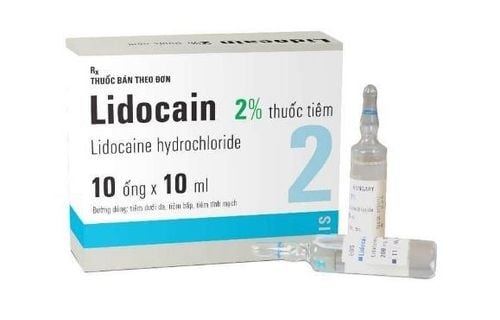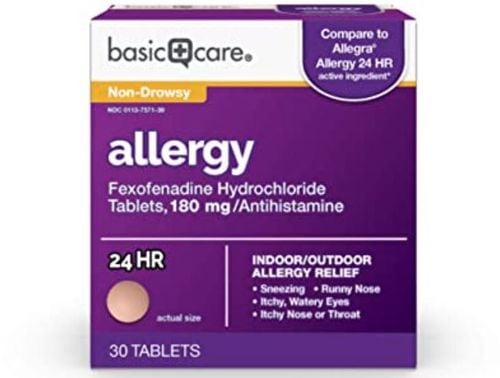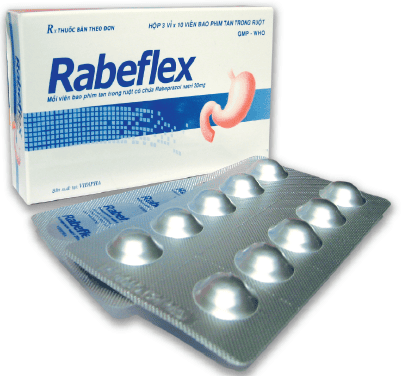This is an automatically translated article.
The article was professionally consulted with Master, Doctor Vu Quoc Anh - Pediatrician - Department of Pediatrics - Neonatology - Vinmec Danang International General Hospital.Hand, foot and mouth disease (HFMD) is an infection caused by an enterovirus virus, which spreads very quickly and is most commonly seen in children. In mild form, the disease usually goes away on its own and does not affect the child's health much. However, in recent years, the disease often has dangerous complications.
1. What is hand, foot and mouth disease?
Hand, foot and mouth disease is a disease caused by several types of enteric viruses. The disease is characterized by fever and concentrated blisters on the palms, soles, and mouth. The most affected subjects are children under 10 years old, especially children under 5 years old.Adults rarely get HFMD in part because their bodies have built up immunity after being exposed to the virus in childhood.
2. What are the symptoms of hand, foot and mouth disease? Does the disease cause itching?

Initial symptoms at the onset of the disease include:
Fever : Fever can be as high as 40 degrees Celsius and is found in most cases of children with hand, foot and mouth disease. Fevers are typical of a viral illness that enters the body and multiplies, causing the body's immune system to increase activity. Headache: Children often have a headache when they have hand, foot and mouth disease Anorexia: This is a common symptom in children for viral diseases in general and hand, foot and mouth disease in particular Sore throat: The patient will feel the neck pain. Throat sore, throat examination may reveal red nodules on the throat, tonsils, mouth, and tongue. These spots are the cause of pain and difficulty swallowing. Vomiting: In some patients, enterovirus 71 can cause nausea and vomiting.
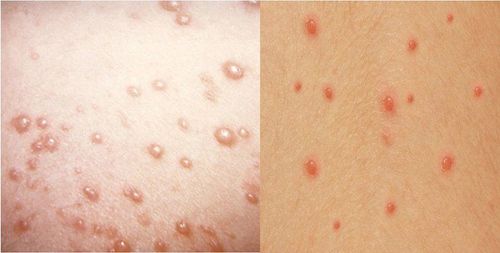
After a day or two of the virus entering and multiplying in the body, many patients develop red spots or sores in the mouth. This condition will become more and more serious, the sores will gradually spread to the tongue, tonsils, gums, inside the cheeks or even appear deep in the throat. These ulcers will make the patient feel extremely painful, difficult to swallow. The sores are usually yellow and have a red halo around them. Symptoms in children under the age of 5 are often more severe than in older children or adults. Nearly 75% of patients with hand, foot and mouth disease develop a rash or characteristic blisters on the palms, soles, between the fingers, toes, groin, buttocks, genitals, abdomen, back.... The blisters are soft and painful to the touch. You may feel itchiness when a new pimple or rash appears, but in most cases the blisters or rash don't itch. The rash begins as red bumps and quickly progresses to gray blisters under a rough, red background. They can also appear all over the patient's body. The rash will last about 3 to 6 days, and if not cleaned, the rash or blisters can cause an infection.
3. Stages of hand, foot and mouth disease
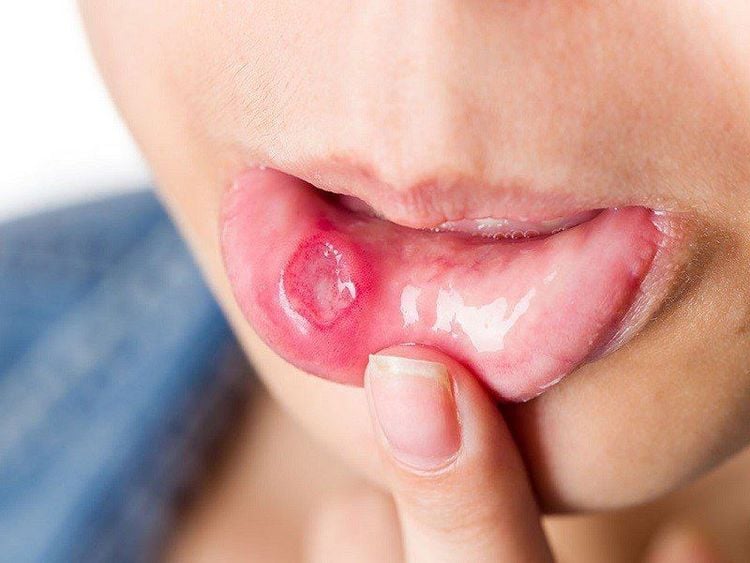
3.1 Incubation phase (early stage of illness) After 3 to 5 days of exposure to the virus, the sick person begins to show symptoms such as cough, fever, loss of appetite, sore throat, abdominal pain, nausea and vomiting. vomit. These signs can be mistaken for the flu by many people. These symptoms usually last only 12 to 48 hours. After that, the patient will gradually develop sores in the oral cavity, the skin around the mouth or the tongue.
Mouth ulcers are one of the most typical symptoms of hand, foot and mouth disease. A condition in which red spots appear in the mouth, especially around the lips, tongue, and gums. These red spots are small at first, then enlarge and spread to form large, dark ulcers in the middle and surrounded by a red border. Mouth sores are painful. For children, they make them cry, stop eating, can't sleep... The sores will appear for about 5 to 7 days and then disappear.
Erythema is also a typical symptom of hand, foot and mouth disease. These rashes appear on the palms, feet, buttocks, and rows. The rashes are small, painless or itchy and appear for about 10 days. At this stage, care should be taken to avoid breaking the blisters on the skin because they can cause the virus to spread and spread to others.
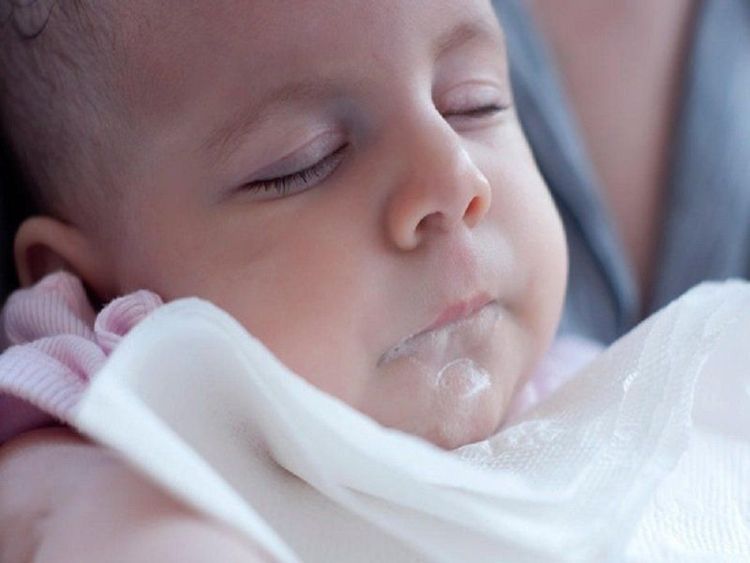
In addition, children may also vomit a lot, convulsions, heart palpitations, shortness of breath, high fever with no signs of improvement even when using antipyretic drugs. At this time, parents should take their children to the hospital for examination and treatment. Avoiding subjective cases, disregarding the course of the disease causes children to have dangerous complications such as meningitis, heart failure, pneumonia, affecting the health of children, even the lives of children.
4. Causes of hand, foot and mouth disease
The disease is spread from person to person relatively easily through contact with an infected person or:Fluid from the blisters on the body of the sick person breaking up Stool of an infected person Saliva or nasopharyngeal secretions of an infected person after coughing or sneezing. a little bit. In addition, the disease can also be transmitted indirectly through sharing objects, touching surfaces that an infected person has had contact with such as doorknobs, table tops, chairs....
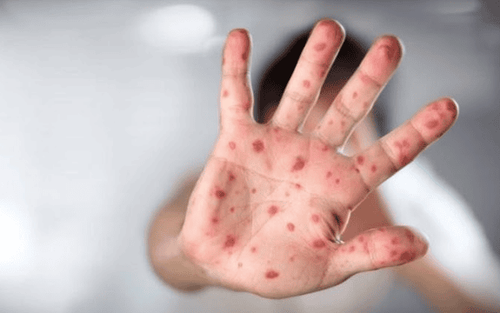
5. Methods of treatment of hand, foot and mouth disease
Currently, there is no vaccine or specific treatment for hand, foot and mouth disease. The disease will go away on its own after about 1 week to 10 days. Treatment of the disease is usually based on treating the symptoms, which can be applied in the following ways:Use antipyretic and pain relievers Clean mouth with warm, diluted salt water. Apply a reasonable rest regime. Drink plenty of fluids or electrolytes to replace fluid loss due to fever, vomiting, or diarrhea. For children, it is necessary to give them soft, easy-to-swallow foods, and avoid acidic, spicy, hot and salty foods. Avoid sharing some personal items such as bowls, chopsticks, spoons. Infected people need to be isolated from others to prevent the disease from spreading. When there are unusual symptoms suspected of having hand, foot and mouth disease, it is necessary to take the patient to medical facilities for examination and treatment in the most reasonable way.
6. Prevention of hand, foot and mouth disease

Teach children personal hygiene, especially good hand hygiene with soap, before eating and after using the toilet to reduce the risk of contracting the virus that causes hand, foot and mouth disease. In addition, effective oral care is also a measure to help reduce the risk of disease Teach children not to put their hands or toys in their mouth Regularly clean the house, disinfect and disinfect with soap, water and solutions wash. Perform cooked food, drink boiling, clean children's utensils. Cut fingernails and toenails short. Limit children's contact with other infected or suspected infected children, avoid letting them hug, kiss or share furniture Provide adequate nutrition for children If any abnormal signs are detected, take the child Immediately go to medical facilities for timely examination and diagnosis as well as quickly give treatment measures to avoid the disease from worsening and causing dangerous complications. Hand, foot and mouth disease is a serious disease that can spread quickly and greatly affect the health, even the life of the patient, especially young children. Therefore, parents need to give their children good personal hygiene habits, wash their hands with soap before eating, after going to the toilet and after returning from going out to minimize the risk of diseases. general and hand, foot and mouth disease in particular.
Pediatrics department at Vinmec International General Hospital is the address for receiving and examining diseases that infants and young children are susceptible to: viral fever, bacterial fever, otitis media, pneumonia in young, ... With modern equipment, sterile space, minimizing the impact as well as the risk of disease spread. Along with that is the dedication from the doctors with professional experience with pediatric patients, making the examination no longer a concern of the parents.
If there is a need for consultation and examination at the Hospitals of the National Health System, please book an appointment on the website to be served.
Please dial HOTLINE for more information or register for an appointment HERE. Download MyVinmec app to make appointments faster and to manage your bookings easily.






